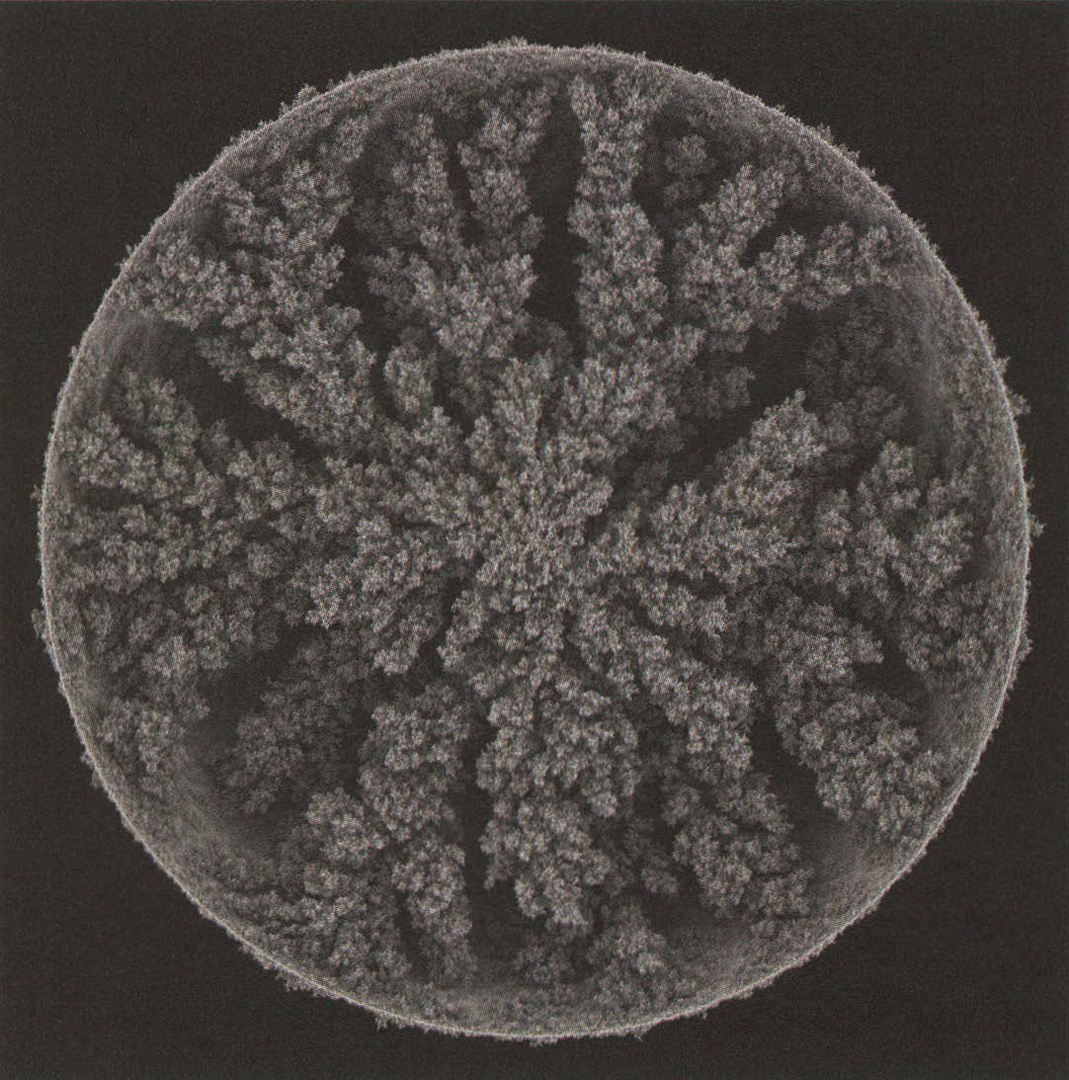Andy Lomas: Aggregation 22
Artist(s):
Title:
- Aggregation 22
Exhibition:
Medium:
- Algorithmic image
Size:
- 38" x 38"
Category:
Artist Statement:
This study is driven by a desire to explore the aesthetic and incredible intricacy of organic forms. The generated structures are created using a process of digitally simulated growth by aggregation. These cross-sectional views recall the internally segmented, cellular structures of biological systems resulting in strong echoes of electron microscopy and Ernst Haeckel’s images of natural forms.
Complex relationships between symmetry and asymmetry exist on many levels. The simple rules used to generate the simulations are inherently symmetrical in nature, but this symmetry is spontaneously broken by random processes in the growth algorithms. Radically different forms can be created by introducing small modifications to the generation rules and biases to the ways particles flow before they deposit on the aggregated structure. The intricate sculptural shapes created have what appear to be large-scale symmetries and similarities, but when they are examined in detail, it is apparent that no part is ever repeated, and nothing on a detailed level is in fact symmetric.
Technical Information:
The base algorithms used to generate the forms are variations on Diffusion Limited Aggregation. Different structures are produced by introducing small biases and changes to the rules for particle emission, motion, and deposition. The growth-like nature of the process, repeatedly aggregating on top of the currently deposited system, produces reinforcement of deviations caused by small forces applied to the undeposited particles as they randomly move. This means that small biases to the rules and conditions for growth can produce great changes in the finally created form.
The rendered structures are implicit surfaces composed of many millions of particles. Simulations can run from many days to weeks, with the final generated forms typically having between 30 and 50 million particle primitives. All the software used to simulate the structures and render the final images was written by the artist in Visual C+ +.





